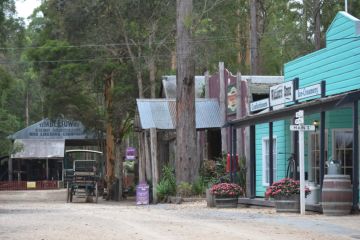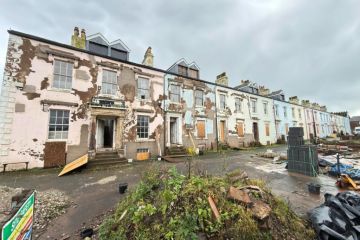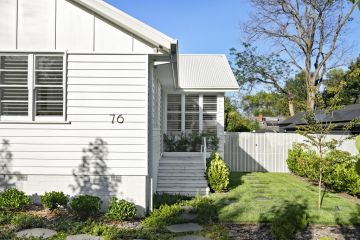The Sydney suburbs where the highest proportion of bond money is forfeited by tenants

Where do the worst tenants in Sydney live?
Based on data released for the first time by Fair Trading, it’s the renters of a little pocket of the south-west with the postcode 2163: Carramar, Lansdowne and Villawood.
Partly in Canterbury-Bankstown and partly in Liverpool and Fairfield, that particular spot has topped Sydney’s rental hall of shame, with a staggering 61 per cent of bond money retained by agents over the April-June quarter in disputes about, or non-payment of, rent.
In Georges Hall 57 per cent of rental bond money was retained.
In third place was more misery for the south-west, with tenants in Cabramatta, Canley Heights, Canley Vale and Lansvale – at postcode 2166 – forfeiting a collective 54 per cent of their bond money.
The data, from the NSW government’s secure online lodgement system Rental Bonds Online, which holds more than 800,000 rental bonds, was released on Thursday by the Minister for Better Regulation Matt Kean. It’s the first time such information has been made publicly available.
“I want to put consumers first and this data does that by allowing open, transparent access to useful rental information,” Mr Kean said. “This untouched data can be analysed by individuals trying to decide where to rent or invest, as well as innovators who could use the data to create apps and other programs to help consumers.”
It tells a sorry story for many of the investors who have raced to buy lower-priced property in the south-west, and lease it out, and are now seeing parts of that area with the highest rates of retention of rental bond money, often indicating difficulties in paying rents.
Only those towns in the Blacktown area of western Sydney with the postcode 2770 offered them any relief, with those coming in at fourth place on the bottom 10 list, losing 51 per cent of their bond money: the suburbs of Bidwill, Blackett, Dharruk, Emerton, Hebersham, Lethbridge Park, Minchinbury, Mount Druitt, Shalvey, Tregear, Whalan and Willmot.
NSW top 10 worst postcodes for bond forfeiture
2388 – Boolcarroll, Cuttabri , Pilliga
2829 – Coonamble
2163 – Landsdown, Carramar, Villawood (Sydney)
2711 – Hay
2198 – Georges Hall (Sydney)
2166 – Canley Vale, Cabramatta (Sydney)
2663 – Junee, Wagga
2502 – Wollongong
2821 – Narromine
2770 – Mount Druitt (Sydney)
South west Sydney real estate agency director Nickolas Dilles of Century 21 Fairfield said it was still an excellent region to invest in. “The delinquency rate really isn’t that bad, and if you have a good agent then they’ll do all the checks and balances to make sure they’ll get an excellent tenant in.
“On the plus side, it’s also very affordable and cheap, and investors can get a better return than in the eastern suburbs or inner west. Here, you can get rental yields of five to six per cent, and more if you add a granny flat to the back of the house as we often have larger blocks.”
In fifth place came more misery for the south west with Bass Hill, in postcode 2197, losing 50 per cent of bond money, and then in sixth, nearby Yagoona and Yagoona West in postcode 2199, dropped 49 per cent.
Domain Group chief economist Dr Andrew Wilson said that, with rents so high in Sydney and the median rent now sitting at $550 a week, many tenants were being forced into accommodation they couldn’t really afford just to have a roof over their heads. This could ultimately lead to defaults and rental bonds being retained.
“Rents in Sydney today are 30 per cent higher than they are in Melbourne and they’re rising faster than incomes,” Dr Wilson said. “I guess that that means many people are being forced to pay more than they have and, with people in the south-west often having lower income levels than in some other parts of Sydney, defaults would be higher there.”
Tenants’ Union of NSW advocacy and research officer Leo Patterson Ross said the trend in Sydney’s south-west mirrored lower income areas, with census figures showing more than half of people in Georges Hall were paying more than 30 per cent of their rent.
“It’s a clear indication that people in lower income areas are more likely to fall into arrears and the bond is a buffer in those cases,” said Mr Patterson Ross.
He said those on lower incomes were less likely to dispute a bond because there was more at stake when it came to preserving a good relationship with a landlord.
Mr Patterson Ross also made a connection between the high proportion of forfeited bonds, in some cases, and areas with strong migrant populations, arguing that tenants might not be aware they could dispute a confiscated bond.
Mr Kean said the release of this information was helpful for both property-buyers and those who leased them. “Whether families want to live in Paddington or Penrith, Hornsby or Harrington Park, this is an invaluable insight that can help them choose where to rent, invest or purchase a home,” he said.
“The applications of this data are wide-ranging; investors can use it to locate new and emerging rental markets, tenants can find the best and cheapest areas to rent in, and tenants and agents can use it to find areas with long-term residents or families in the community.”
We recommend
We thought you might like
States
Capital Cities
Capital Cities - Rentals
Popular Areas
Allhomes
More
- © 2025, CoStar Group Inc.







